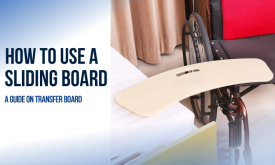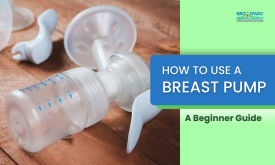Surgical gloves are the most common and vital medical supplies needed in a hospital setup or when dealing with patients. While many pieces of equipment aid in better healing and recovery, surgery gloves are the basic essential that help control infections and work as a prevention guard for both the patient and the doctor. According to the United States Food and Drug Administration (FDA), it is a compulsion to use surgical gloves when practicing ensuring infection control. The FDA even regulates norms for good quality gloves, including leak-proof, tear-resistant, sterile, biocompatible, and many others.
Rubber gloves were the most used surgical gloves in the past. With advancements and experiments, various other types of materials help design gloves that serve different medical purposes. Here is a guide about types of surgical gloves, why you need one when handling patients, and everything you need to know about surgical gloves.
Why Do You Need Surgical Gloves?
Surgical gloves are safety equipment that helps prevent direct contact with microorganisms that can cause infections in doctors and patients. Along with infection control, the surgical gloves help resist the splash during operations and give the doctor a controlled grip while using tools and equipment in surgery. Being sterile ensures cleanliness and complete safety, especially when dealing with open wounds. Different types of surgical gloves serve different purposes, aiding better functioning and protection in the healthcare sector.
Types of Surgical Gloves
Latex Surgical Gloves
Surgical gloves in latex material are the most used type in the health industry. The latex used in designing the gloves is a natural rubber, which adds extra elasticity and is a better fit while performing surgical tasks. It helps better resist puncture and tears while using sharp tools and offers complete protection from harmful chemicals. Chances of latex allergy have limited the use of latex gloves for low-risk procedures.
Nitrile Surgical Gloves
As latex allergy is common, nitrile surgical gloves are widely replacing latex gloves with similar features. Nitrile is a synthetic rubber that is not a common allergen, reducing the risk of complications due to the glove's material. The glove's fit allows smooth functioning without interruptions and is resistant to tears and chemicals. Being medical-grade, nitrile gloves are disposable and FDA-approved for medical use.
Vinyl Surgical Gloves
Vinyl is a latex-free material, a good option for avoiding latex allergy. Vinyl is a plasticized PVC material, making the gloves less durable than other gloves. Using gloves for surgical procedures involving many fluids contact and chemicals is not advisable. These gloves work well for low-risk activities and body examinations that don’t involve any exposure to sharp tools and chemicals.
Polyisoprene Gloves
Polyisoprene is a synthetic polymer that creates one of the most sustainable surgical gloves. The material is derived by polymerizing petroleum-derived raw material. These gloves are latex-free and undergo various procedures to enhance their strength. Compared to different synthetic materials, polyisoprene is closest to latex and offers a comfortable fit with high memory for better functioning in healthcare sectors. Polyisoprene gloves retain their shape and allow you to use your fingers to perform different activities easily.
Chloroprene Gloves
Compared to other gloves, chloroprene combines the quality of all. It is latex-free, comfortable, tactile sensitive, and fits snugly to allow comfortable mobility to your hands. Surgery gloves can resist chemical exposure but can get a bit uncomfortable if worn for longer durations. The chloroprene rubber comes under the same trademark of neoprene material, which makes the glove puncture-resistant.
Powder and Powder-free
Powder gloves are easy to wear, enhance grip, and help absorb sweat when performing healthcare activities. The powder used is mostly cornstarch. While the powder can delay the healing process if it comes in contact with wounds, using powder-free gloves is recommended in surgical procedures involving higher risks. Powder-free surgery gloves help prevent latex allergy and are easy to wear. Being free from cornstarch, which works as a latex carrier, powder-free surgical gloves go through a chlorination process, making them safe to use.
Chlorinated Surgical Gloves
The chlorination process helps increase the durability of the gloves and makes it easy for the gloves to be worn easily. The chlorinated gloves help reduce latex allergy and make it easy to wear the gloves for longer hours without any irritation. The process involves treating the gloves with chlorine gas to reduce the latex protein in the gloves. Chlorinated gloves are mostly disposable as chlorination reduces the life of gloves.
Biodegradable Surgical Gloves
Using a biodegradable surgery glove is the go-to option when you want to give your bit to the environment while prioritizing the patient's health. These gloves offer all the features of a surgical glove while being environmentally friendly.
Difference Between Regular and Surgical Gloves
Regular gloves help serve basic protection at healthcare facilities. It is mostly used during simple tasks like blood collection, blood pressure monitoring, patient examination, etc. It works as a layer of barrier between two surfaces and doesn’t protect the patient and doctor from infections or harmful substances. On the other hand, surgical gloves are curated using a wide variety of materials and undergo a lot of processes to ensure they provide extra protection. Surgery gloves are tear-resistant, splash-proof, and heat-proof, protecting against chemicals and hazardous exposure. The features of different types of surgical gloves make them perfect for procedures ranging from simple dressing to invasive operations.
Difference Between Latex and Other Surgical Gloves
Of all the materials, latex surgical gloves were the most used for ages. Latex is the natural form of rubber, that is 50% rubber and 50% water. With time, understanding and awareness of latex allergy resulted in the need for other materials. While rare, approximately 1% of the population is allergic to latex. Replacing the latex with other materials helped prevent allergic reactions. Other materials are mostly synthetic and offer better safety regulations compared to latex. While latex is used because of its convenience and comfort, other types of surgical gloves are also widely popular based on different requirements and procedures.
What to Consider When Buying Surgical Gloves?
Material
As discussed, there are different materials offering different properties. Choose a material that suits you and doesn't cause any allergy. Along with allergies, ensure the material is safe and FDA-approved for use during surgical procedures.
Fit of Gloves
The surgery gloves should take the shape of your hands and shouldn’t cause discomfort while performing any surgical process. Ensuring the fit is proper and hand movement is smooth is a must.
Consider the Need
Different intensity of surgical procedures requires different types of gloves. Surgical gloves offer different thicknesses and protection from chemicals, which work differently for less invasive and highly invasive procedures. Choose surgical gloves based on the type of surgical procedure.
Check Features
Consider the features of the surgery gloves, like sterile, dexterity, comfort, grip, etc., before buying. The basic features of the gloves ensure that they are safe and aid smooth functioning during surgeries.
Standard Specification
Checking the standard specification is vital when buying a surgical glove, especially for intense procedures. Every glove needs to be FDA-approved to ensure safety in different levels of procedures. Class I is generally for medical purposes and requires a 510 (a) premarket notification to ensure leak-proof, biocompatibility, and other safety features for surgical procedures.
Need for Double Gloving
Double gloving is a common practice doctors and surgeons follow to ensure added safety and protection, especially from blood-borne diseases. Double gloving involves wearing two layers of gloves, each of a different color. Sometimes, when using sharp tools and involved in intense procedures, the surgical gloves can get perforated, which can increase the spread of infections and cause risk. The perforations are generally so small that they are invisible to your naked eye. Double gloving adds an extra layer of protection if the upper layer gets damaged. The two colors of gloves help detect perforation easily and allow you to take prompt action when in between surgical procedures.
Benefits of Using Surgical Gloves
Safety Regulations
The most common and vital benefit of using the different types of surgical gloves is the safety measures they provide. Being FDA-approved, surgical gloves are a basic level of protection that is helpful for both the doctor and patient to ensure safety from viruses, splashes, and other harmful substances that can come in contact during various procedures.
Durability
Surgery gloves are designed to make them puncture-resistant, heat-proof, splash-resistant, and tear-proof. The gloves offer dexterity and comfort, allowing for easy mobility of fingers while performing surgeries and other activities.
Various Specifications
A wide variety of surgical gloves that offer different specifications are available in the market. While the material is the basic thing to check, gloves come in different cuff lengths, colors, fits, thicknesses, etc. The specifications cater to various medical needs. The colors of gloves help with double gloving and even differentiate the use of gloves for different levels of procedures.
Common Skin Reactions with Different Types of Surgical Gloves
Wearing gloves for long hours can cause some irritation to the skin. Latex allergy, irritant contact dermatitis, allergic dermatitis, hives, skin rash, cuts and cracks, etc., are common skin reactions that can occur due to material allergy or excessive use of surgical gloves. While all these reactions are very rare, to avoid the reaction, ensure to consider the following:
- Choose the glove material that suits the skin
- Wash hands before and after using gloves
- Do not apply oil-based lotion before wearing surgery gloves
- Keep hands completely dry to avoid moisture buildup that can make skin even more sensitive
- Wear cotton liner if using disposable surgical gloves for more than the recommended time
- When not in use, remove gloves and let your hand skin breath
- Use good quality and trusted brands when choosing surgical gloves
Choosing the right disposable surgical gloves is important to maintain safety while performing different procedures. Gloves that meet good quality and medical standards are often a reliable option for health professionals. Broadway Medical Supply offers an uncompromised range of surgical gloves at prices that effectively cater to all surgical requirements. Besides surgery gloves, you can avail of the best in the industry medical supply for at-home or hospital needs.
Frequently Asked Questions (FAQ’s)
1. Are There Different Types of Surgical Gloves for Specific Procedures?
Yes, there are different types of surgical gloves for different levels of procedures. Each glove design helps provide a certain level of protection, which helps decide the need for surgery gloves. Using latex gloves works well for most non-invasive, low-risk, and general procedures. Vinyl surgical gloves help when you are allergic to latex. Using other synthetic gloves like nitrile or polyisoprene is helpful for procedures involving exposure to fluids and harmful substances.
2. How Should Surgical Gloves Be Stored?
Surgical gloves are a crucial part of every medical procedure. Storing the gloves properly is vital to ensure that there is no contamination and that the procedures performed while wearing the gloves are safe. To store the surgery gloves, ensure there is no moisture, or else the gloves can develop bacteria. The temperature to store the gloves should neither exceed 90° F nor be in extremely cold conditions. Store at a normal temperature of 50° F to 72° F.
3. Do Surgical Gloves Protect Against Viruses Like COVID-19?
Different types of surgical gloves offer different levels of protection from viruses and bacteria. Using gloves while performing medical services ensures no spread of blood-borne diseases or infection from the surgery site. COVID-19 is an airborne disease, and surgical gloves cannot protect against the virus. Using a face mask along with surgical gloves while practicing provides complete protection.
4. What Is the Proper Way to Dispose of Surgical Gloves?
After use, surgical gloves get contaminated with a lot of fluids and chemicals. Disposing them correctly becomes crucial to ensure that disease-causing viruses and bacteria do not spread. Most surgical gloves are one-time use and disposable. Discard them by throwing them into a lined trash bin. If exposed to hazardous and flammable substances, seal the gloves in a zip lock bag before throwing them in the bin.









